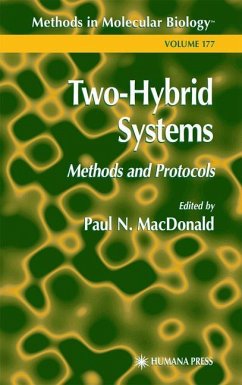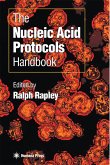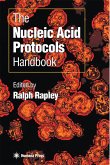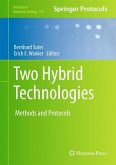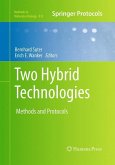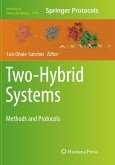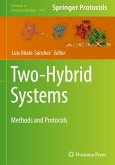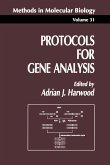The yeast two-hybrid system is one of the most widely used and productive techniques available for investigating the macromolecular interactions that affect virtually all biological processes. In Two-Hybrid Systems: Methods and Protocols, Paul N. MacDonald has assembled a collection of these powerful molecular tools for examining and characterizing protein-protein, protein-DNA, and protein-RNA interactions. The techniques range from the most basic (introducing plasmids into yeasts, interaction assays, and recovering the plasmids from yeast) to the most advanced alternative strategies (involving one-hybrid, split two-hybrid, three-hybrid, membrane recruitment systems, and mammalian systems). Methods are also provided for dealing with the well-known problems of artifacts and false positives and for identifying the interacting partners in important biological systems, including the Smad and nuclear receptor pathways. To ensure ready reproducibility and robust results, each techniqueis described in step-by-step detail by researchers who employ it regularly.
Comprehensive and highly practical, Two-Hybrid Systems: Methods and Protocols not only reveals how the great variety of plasmid vectors and approaches may be optimally deployed, but also quickly empowers novices to establish two-hybrid systems in their laboratories, and experienced researchers to expand their repertoire of techniques.
Comprehensive and highly practical, Two-Hybrid Systems: Methods and Protocols not only reveals how the great variety of plasmid vectors and approaches may be optimally deployed, but also quickly empowers novices to establish two-hybrid systems in their laboratories, and experienced researchers to expand their repertoire of techniques.
"The utility of the technique makes this book worthwhile since all the information necessary to get started is included. Anyone should be able to start using the two-hybrid system in their lab using this book as a guide. The book is written for all levels of expertise from student to senior investigator. Each chapter is written by an expert in that particular area. The protocols are detailed and easy to follow and even the preparation of standard buffers is described. A great deal of information on basic yeast techniques is provided for investigators who have not previously worked with yeast. Each chapter contains numerous notes and insights on what to keep an eye out for and potential problems. This would be an excellent addition to any laboratory considering starting the two-hybrid system. The first chapter on the origins of the method is a must read for everyone, especially students."-98 Score, 5 stars, Doody's Health Science Book Review Journal
"The stated goal of the volume is "to introduce the yeast two-hybrid systems to students, research assistants, research associates, and other more senior investigators considering this as a new approach." This goal is well achieved as the volume is easy to read and comprehensive.... the first section of this volume provides in depth detailing of yeast protocols, including several very useful trouble shooting solutions and tips well beyond the scope of those found in the instruction manuals accompanying commercial kits....this book is a worthwhile investment to ensure that the most is gained from your two-hybrid experiments and thus I would recommend it." - Molecular Biotechnology
"This current volume is a practical, laboratory manual with detailed methods and trouble-shooting tips for the yeast two-hybrid approach. The volume includes a brief historical overview, with chapters addressing yeast husbandry and media preparation and yeast genetic modification. The manual lso includes detailed accountsof how to construct a two-hybrid screen and how to analyse the positives. I found the book easy to read, and the protocols were clear and straightforward to follow. There are a number of useful tables, including yeast genotypes and genetic markers as well as available vectors. I would recommend this book as a practical laboratory manual for anyone contemplating a search for a partner protein using the yeast two-hybrid approach." -The Endocrinologist
"The stated goal of the volume is "to introduce the yeast two-hybrid systems to students, research assistants, research associates, and other more senior investigators considering this as a new approach." This goal is well achieved as the volume is easy to read and comprehensive.... the first section of this volume provides in depth detailing of yeast protocols, including several very useful trouble shooting solutions and tips well beyond the scope of those found in the instruction manuals accompanying commercial kits....this book is a worthwhile investment to ensure that the most is gained from your two-hybrid experiments and thus I would recommend it." - Molecular Biotechnology
"This current volume is a practical, laboratory manual with detailed methods and trouble-shooting tips for the yeast two-hybrid approach. The volume includes a brief historical overview, with chapters addressing yeast husbandry and media preparation and yeast genetic modification. The manual lso includes detailed accountsof how to construct a two-hybrid screen and how to analyse the positives. I found the book easy to read, and the protocols were clear and straightforward to follow. There are a number of useful tables, including yeast genotypes and genetic markers as well as available vectors. I would recommend this book as a practical laboratory manual for anyone contemplating a search for a partner protein using the yeast two-hybrid approach." -The Endocrinologist

